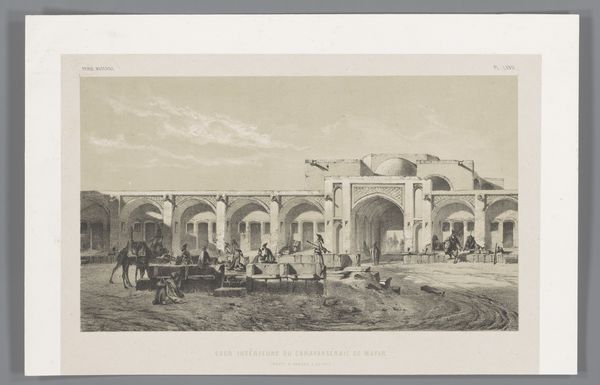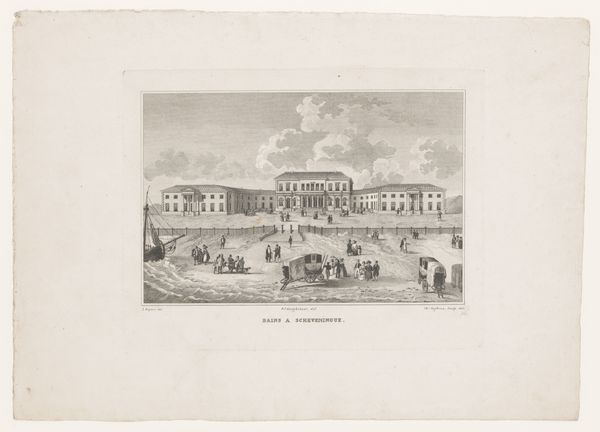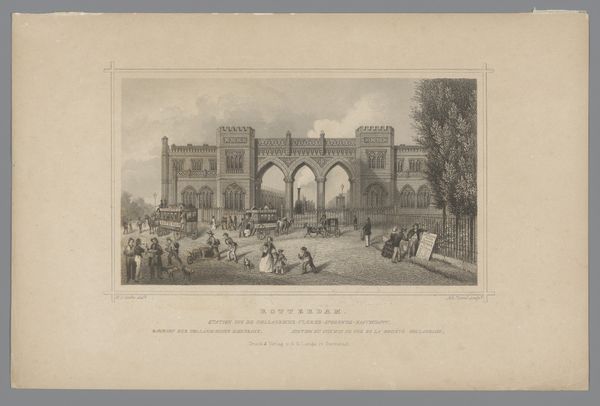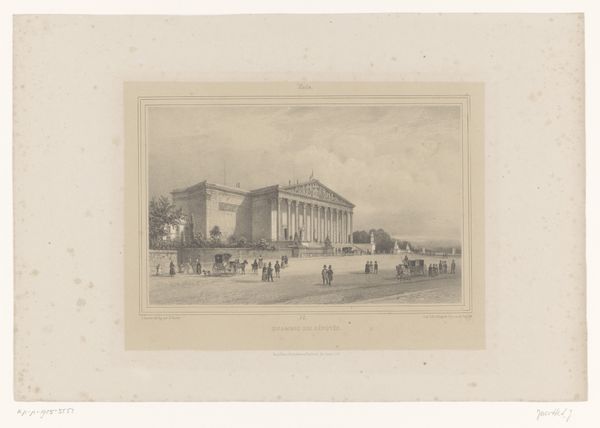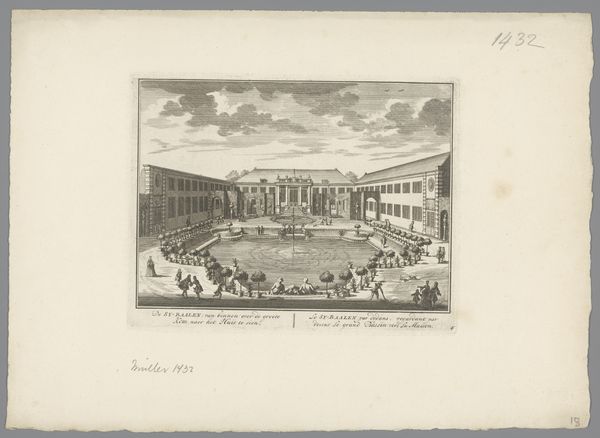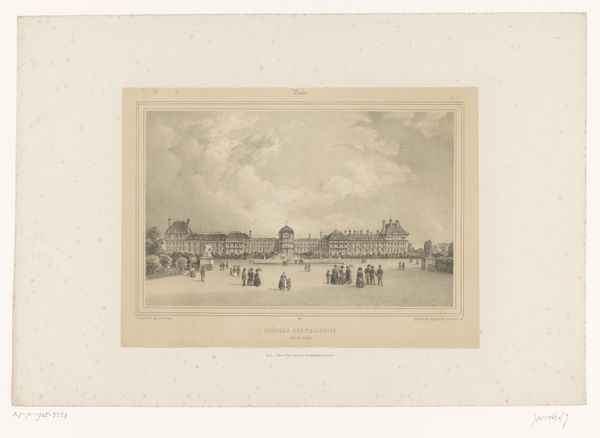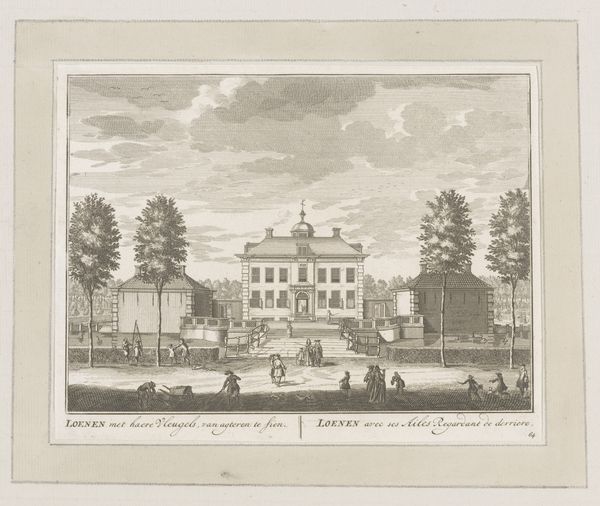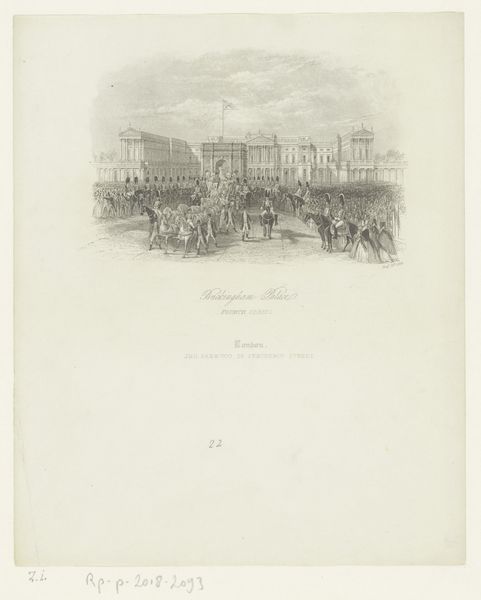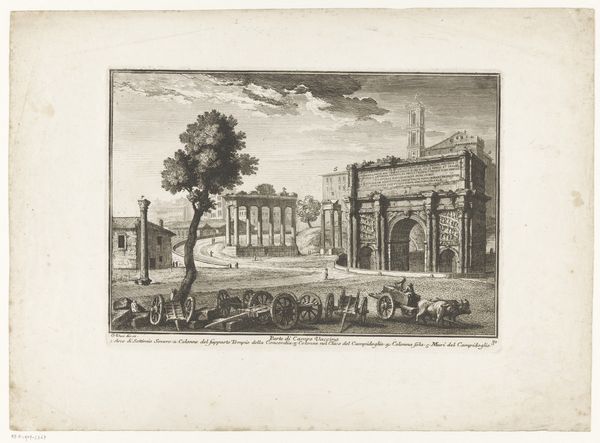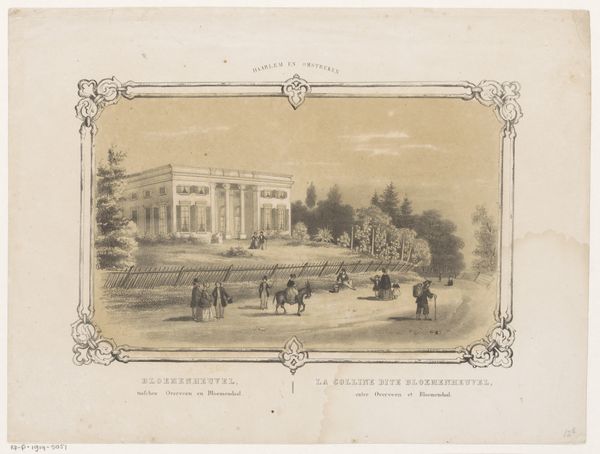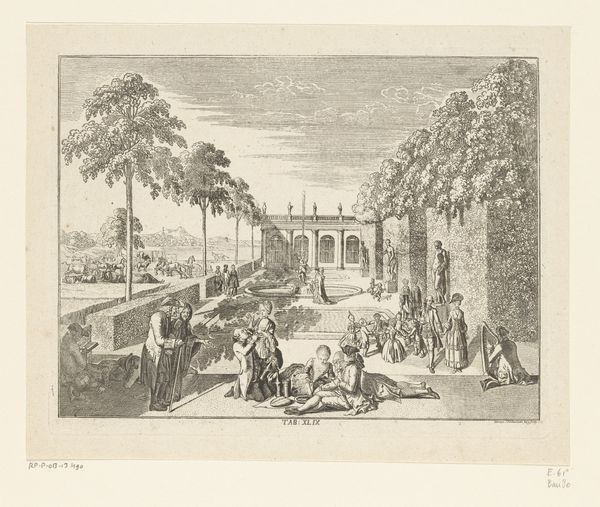
Church of St. George, Bucharest, Wallachia, July 13, 1837 1839
0:00
0:00
drawing, lithograph, print, etching, paper
#
drawing
#
lithograph
# print
#
etching
#
landscape
#
etching
#
paper
#
romanticism
#
cityscape
Dimensions: 171 × 288 mm (image); 170 × 289 mm (primary support); 348 × 457 mm (secondary support)
Copyright: Public Domain
Editor: Auguste Raffet’s lithograph, "Church of St. George, Bucharest, Wallachia, July 13, 1837," created in 1839, depicts a seemingly quiet scene in front of a grand building. I'm struck by the stark contrast between the imposing architecture and the everyday activities taking place in the foreground. How do you interpret this work, especially considering its historical context? Curator: That's a perceptive observation. While seemingly a tranquil cityscape, this print exists within a charged political landscape. Wallachia in 1837 was under Ottoman influence but increasingly subject to Russian intervention. This image of St. George, therefore, isn't just about architectural beauty, but about the subtle assertion of cultural and perhaps religious identity within a complex geopolitical struggle. Notice the people gathered in the foreground. Who do you think they are, and what might their presence suggest? Editor: They seem like ordinary citizens, perhaps merchants or clergy. Could their gathering hint at a community holding onto their traditions and beliefs amidst external pressures? Curator: Exactly. Raffet, consciously or not, captured a moment of quiet resistance, of communal resilience. This image then becomes a statement about the power of culture and faith to endure even under duress. Think about the very act of documenting this church – it’s an act of preservation, a declaration of its importance. Do you think a contemporary artist might approach this subject differently? Editor: Possibly. A modern artist might focus more explicitly on the tensions and inequalities inherent in that historical power dynamic, perhaps amplifying the voices of marginalized groups often left out of these narratives. Curator: Precisely. This work shows us that art doesn't exist in a vacuum. By analyzing historical contexts and power dynamics, we can uncover the layers of meaning embedded within even seemingly simple scenes. Editor: This has really opened my eyes to how much context matters when interpreting art. I will definitely consider more social elements during my analysis from now on. Thank you!
Comments
No comments
Be the first to comment and join the conversation on the ultimate creative platform.
